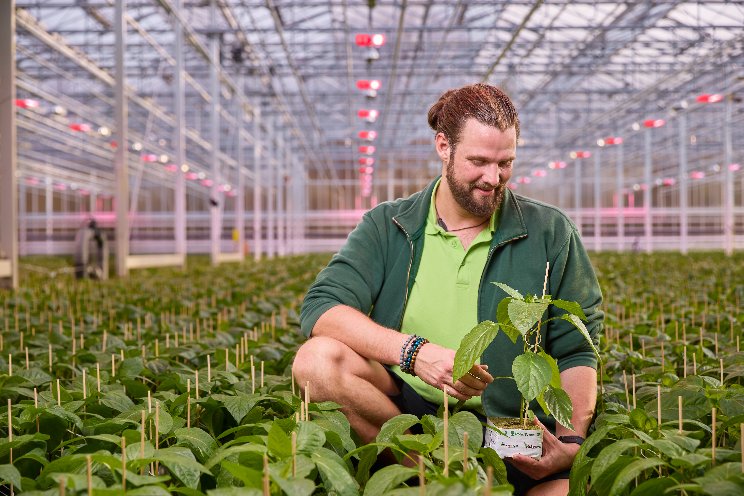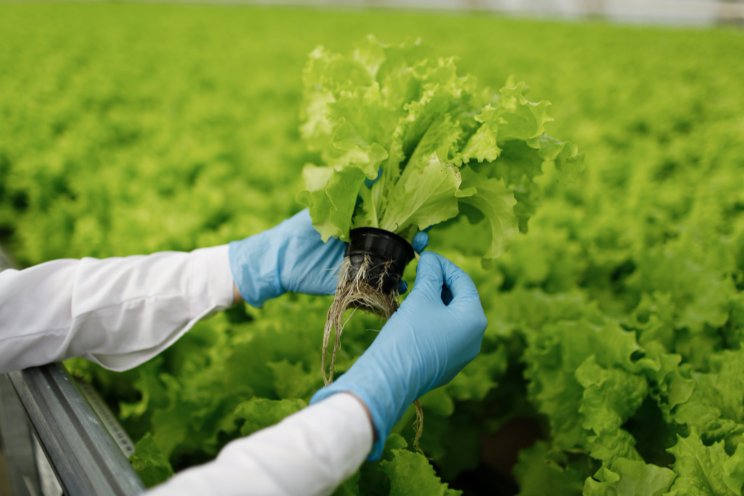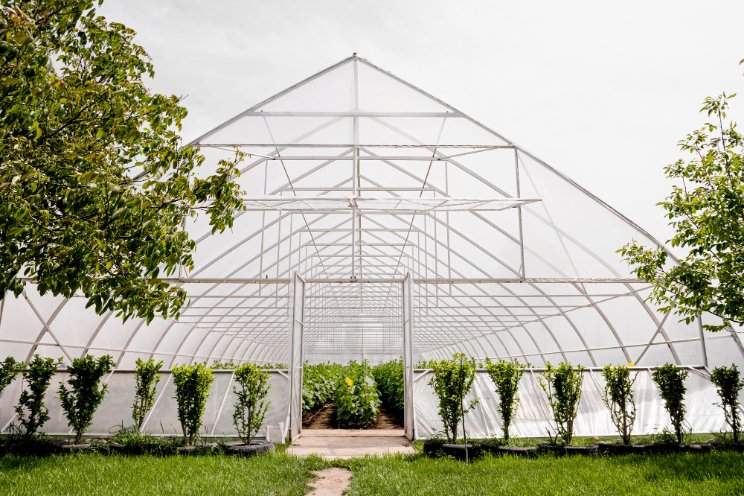Smart Greenhouse with Dynamic LED Lighting
Added on 09 March 2023

By Sollum’s R&D and Agronomy Team
Preface
What does dynamic LED lighting mean, and what does it offer greenhouse growers? Dynamic lighting, also called adaptive lighting, smart or AI-powered lighting, is programmable, allowing growers to create tailored lighting for specific plants. With access to hundreds of light recipes, Sollum's fully dynamic LED fixtures and SUN as a service® platform make it possible for growers to have multiple lighting zones - each zone can be controlled independently - and offers real-time dimming capabilities of light spectra and light intensity throughout the greenhouse. This high-level control of greenhouse lighting helps growers to increase yields, improve crop quality and reduce energy costs.
Sollum Technologies is the only company that provides greenhouse growers with a 100% programmable, AI-powered LED lighting solution that dynamically recreates, modulates, and perfects the full spectrum of the Sun's natural light in real-time. This type of lighting brings a new level of adaptability and growing success now and in the future.
New Crop, New Problem
A dynamic LED grow light solution allows growers to cultivate various crops by recreating the optimal light conditions for each crop and cultivar. Whether growing an assortment of crops or transitioning to a different crop, implementing 100% programmable and fully dynamic lighting with real-time dimming will ensure plants get the appropriate amount and type of light to thrive.
Different crops have different lighting requirements as it relates to photoperiod, spectrum and light intensity, which can make it difficult to change crops and still get the most of the greenhouse. Crop changes are a reality of the greenhouse industry due to market influences and pest/disease cycles. For example, rugose in tomatoes requires removal of the infected crop, thorough disinfection and often a complete crop change to plants such as cucumbers or peppers. Greenhouse growers can address these challenges by transitioning to dynamic lighting and adapting their lighting parameters to the new crop's specific requirements.
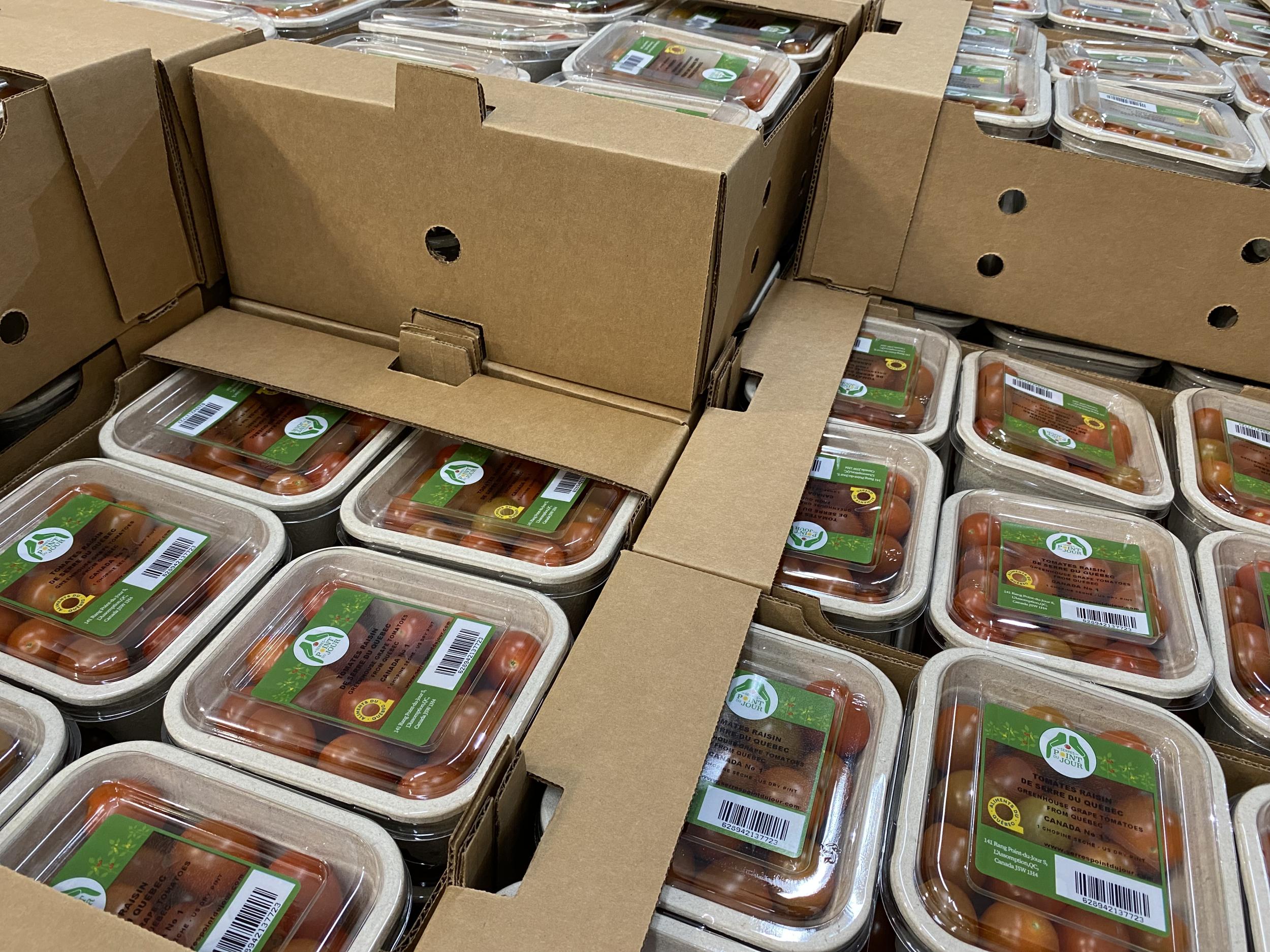
Source: Les Serres Point du Jour, Québec, cherry tomatoes that grew under Sollum’s LED grow light solution
Rugose is not the first disease to impact crop health and productivity across the greenhouse sector. The Cucumber Mosaic Virus previously wreaked havoc and a new cucurbit virus, the Cucurbit Aphid-Borne Yellow Virus (CABYC), has appeared in Europe and could prove problematic. Transitioning crops via dynamic lighting offers the opportunity to manage these issues and contribute to a profitable growing season.
The demand for fresh, locally grown fruit is causing a strawberry frenzy in the produce industry. Greenhouses enable year-round local production and can be key to providing a steady supply of strawberries to the market when local field strawberries are not in season. Growers across North America and globally are adjusting their systems to produce strawberries, whose lighting needs differ from those of vine crops.
Strawberries benefit from far-red light to prevent leaf stacking and improve canopy aeration, especially in the first months of production. Other plants, such as winter peppers, benefit from far-red light mid-season to prevent pepper stacking. Far-red light stretches the nodes and facilitates crop work in snacking cucumbers, while also shortening the time between transplanting and harvesting. Transitioning to dynamic lighting allows growers to create and revise lighting zones at any point, ensuring that each plant is receiving the ideal lighting conditions. This can help growers manage different crops and cultivars. By understanding and utilizing specific lighting for different crops, growers can quickly adapt to challenges to attain peak productivity and improve ROI.
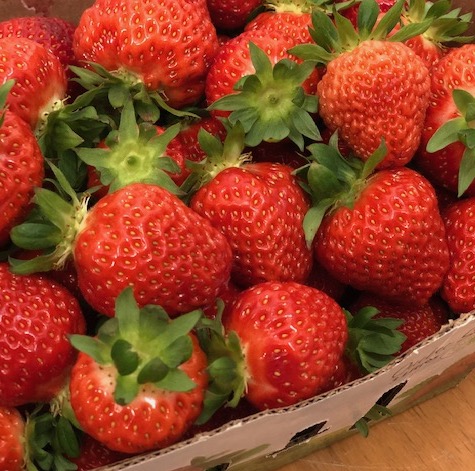
Source: KM0 project, Fondation Gaïa Nova, Québec, strawberries grew under Sollum’s LED grow light solution.
Fine-Tuning Light for Cultivar Genetics
A dynamic LED grow light solution allows growers to fine-tune their lighting strategy for each cultivar, providing
the exact amount of light each plant needs to grow without wasting energy on plants that don’t need it. Correct lighting for each crop allows to reduce energy costs and improve the overall health of your crops.
Fine-tuning the strategy according to cultivar is an essential aspect of greenhouse farming, as lighting responses are notoriously cultivar-specific. For example, some lettuce cultivars grow best with a daily light integral of 16-17 mol/m2/day, while others can handle 20 mol/m2/day. The light spectrum can also affect pigmentation, with yellow and orange peppers susceptible to bronzing under high light intensities and high blue levels. On the other hand, high light intensities and high blue light levels can enhance the leaf coloration in red-leafed lettuce, whereas the opposite can produce a less saturated leaf color.
Each plant species and cultivar has unique morphological and physiological characteristics that influence their response to light. These characteristics include the type and number of photoreceptors, the size and shape of leaves, and the efficiency of photosynthetic pathways. Some cultivars can have a greater number of photoreceptors, increasing their sensitivity to light and enabling them to use light more efficiently. Furthermore, the specific light intensity, duration, and spectrum requirements can vary significantly between cultivars, affecting the crop's overall growth, development, and quality. To produce optimal yields and quality standards per cultivar, different lighting parameters are required per cultivar as it relates to spectrum, intensity and photoperiod.
Dynamic lighting allows growers to create distinct lighting zones to apply optimum lighting conditions for each crop or variety. Specific lighting zones can be positioned over yellow and orange pepper varieties to prevent bronzing. Similarly, the greenhouse lighting can address red-leafed and green-leafed lettuce varieties and/or according to the optimal DLI. The best part is that these lighting strategies are not set in stone at the start of the season and are changeable via Sollum's SUN as a Service® (SUNaas) cloud platform. Sollum's cloud-based system provides a simple drag-and-drop user interface and access to light recipes to facilitate zone management.

Source: Allegro Acres, Ontario, peppers that grew under Sollum’s LED grow light solution.
In vine crops, cultivars are often described as predominantly vegetative or generative. When the plant is out of balance, growers can adjust the zoning, photoperiod, and spectrum to help bring the plants back into balance. For example, Sollum has worked with multiple growers to increase stem diameter when the head of the crop gets too leggy by temporarily increasing the blue light levels.
In summary, the lighting responses of plants are cultivar-specific, as each plant variety has unique morphological and physiological characteristics affecting how it uses light for growth and development. Growers can fine-tune cultivars' lighting strategy according to their optimum growth requirements, promoting crops' overall health and productivity and the fluidity of changing market conditions and pest/disease cycles.
Keep Plants at Peak Productivity
A dynamic LED grow light solution can help keep plants at peak productivity, AI-powered lighting allows to provide the exact amount of light and specific spectrum each variety needs to grow.
A dynamic LED light solution allows greenhouse growers to maintain the productivity of their plants at peak levels. You can adjust your fixtures' intensity based on the greenhouse's ambient light levels or allow the rectification to automatically dim, maintaining stable levels at the head of the crop. This is different from traditional lighting systems that dim to pre-set levels when natural light reaches a certain threshold.
Dynamic lighting has been shown to impact peak productivity in crop production significantly. It allows for control over the light intensity and spectrum, improving plant growth and health, increasing yields, and produce quality.
-
- Stable light levels: maintaining stable light levels at the head of the crop results in uniform exposure to all plants. The light fixtures automatically adjust the output intensity according to the natural light levels, creating a consistent environment that promotes plant growth and productivity.
-
- Energy efficiency: dimmable LED lights can reduce energy usage by providing only as much light as is needed, thus preventing crop damage and reducing energy costs.
-
- Targeted light intensity: the light recipe can be set with different intensities throughout the day to prevent crop stress and enable growers to run longer photoperiods when beneficial without exhausting the plants. It is especially important for plants that tire during the day, such as CAM plants like orchids, as it allows growers to continue driving photosynthesis according to the plant's capacity.
-
- Impact on pigments and metabolites: the light spectrum and intensity strongly affect the development of pigments and secondary metabolites in leaves and fruit. Dynamic lighting allows growers to control these factors, improving plant growth, coloration, aroma, and produce flavour.
-
- Control over pathogen development: research into the impact of light on pathogen development is ongoing, and dynamic lighting shows promise to slow pathogen growth by applying specific spectral treatments.
.jpg)
Source: Prism Farms, Ontario, mini cucumbers that grew under Sollum’s LED grow light solution.
A fully programmable LED grow light solution provides agronomists with a flexible and effective tool to maintain peak productivity in their crop production by controlling and optimizing the light environment for their plants.
Enable Light Treatment
Finally, dynamic LED grow lights may be used to apply light treatments. Light treatments involve exposing plants to different light patterns to encourage specific growth habits, such as flowering or fruiting. Growers can conveniently adjust the sequence, or light recipe, with dynamic LED lighting to improve overall growth and productivity.
Dynamic lighting allows for balancing the light spectrum and intensity throughout the growing season and even within a day, allowing growers to control the development of their crops. For example, researchers are studying the effects of applying far-red light all day compared to using it only at the end of the day, and dynamic lighting enables growers to make this choice at any time. When plants receive less far-red light during the fall and winter months, growers may add it to their light recipe.
Light spectrum and intensity play a significant role in the development of plants and fruit because they directly impact the process of photosynthesis. Light intensity determines the amount of light energy available for photosynthesis and therefore affects the rate of photosynthesis. If the light intensity is too low, photosynthesis will be limited, resulting in stunted growth and reduced fruit production. On the other hand, if the light intensity is too high, it can result in photodamage which reduces plant growth and productivity.

Source: Allegro Acres/Sollum Technologies. Sollum light recipe.
The light spectrum is vital for plant growth because different light wavelengths affect plant development differently. For example, red light promotes leaf expansion and overall growth whereas high levels of blue light produce smaller, thicker and darker leaves. The ideal light spectrum for a specific crop may vary depending on the growth stage and the desired outcome, such as maximizing fruit production or enhancing the color of leaves.
Additionally, pigments are responsible for the color of the leaves and fruits. At the same time, secondary metabolites are the compounds produced by plants that are not essential for growth but have various beneficial effects such as taste, aroma, and disease resistance. Adjusting the light spectrum and intensity allows you to alter these two factors and enhance or modify crops' attributes.
Working side by side, Sollum and The Chef's Garden demonstrated that dynamic LED lighting enhanced the flavor profile of herbs and vegetables. Additionally, it can improve the coloration of red-leafed lettuce and herbs at the end of the production cycle. Growers can optimize the leaf coloration by using high-red light recipes during the vegetative stage and increasing the blue light levels in the days leading to harvest.
Moreover, dynamic lighting can also impact the production of volatile compounds and aromas, as demonstrated in the case of cannabis. Lastly, research into the impacts of light on pathogen development is underway, and results from these may allow growers to slow pathogen development by applying specific spectral treatments.
Light spectrum and intensity play a crucial role in crop development and understanding the specific lighting requirements of a particular crop is essential for optimizing its growth and productivity. In conclusion, by adjusting the light spectrum and intensity, dynamic lighting allows growers to manipulate and optimize various crop growth and development aspects, such as pigments, secondary metabolites, flavor profile, aroma, and disease resistance.
Adaptable, Profitable, and Sustainable
The future of greenhouse growing as an industry is changing rapidly due to market opportunities such as consumer demand for specific produce varieties, demand for local products, climate change, and the impact of technologies such as dynamic LED Lighting. Greenhouse growers now have the opportunity to create perfect lighting environments for crops all year long, change crops at any time, and adapt to plant and greenhouse conditions. Real-world applications show that truly dynamic lighting that offers real-time control of spectrum and intensity, unlike other lighting systems, increases yield, quality, and taste and saves energy.
To learn more about how dynamic lighting can help your business, contact our Senior Sales Director Nick Occhionero at +1 (514) 220 9284.
About Sollum Technologies
Sollum Technologies designed the only 100% dynamic LED lighting solution that modulates the full spectrum of the Sun’s natural light to illuminate closed environments such as greenhouses, research centers and laboratories. Sollum's award-winning, turnkey solution consists of internet of things, AI-powered light fixtures that are controlled by Sollum's proprietary SUN as a Service® cloud platform. Sollum's distinctive proposition is a fully scalable cleantech solution that evolves with business needs and multi-zone light management, with each zone benefiting from automatic dimming of an unlimited number of light recipes; this is why it provides unparalleled value in terms of energy savings and, additionally for greenhouse growers, increased productivity and superior produce quality.
Founded in 2015, the company is based in Montréal (Québec, Canada), where its design, development, and manufacturing activities are concentrated. For more information, visit sollum.tech.
Header Photo Source: Rose Drummond, Québec, gerberas that grew under Sollum’s LED grow light solution.
More news
